Disabler Wordpress Plugin - Rating, Reviews, Demo & Download

Plugin Description
I don’t like certain things, such as curly “smart” quotes and self-pings. Instead of installing six or seven plugins to handle this, I decided to create one plugin to address the common issues. Disabler allows you to select and deactivate specific settings rather than disabling everything, all through a straightforward UI.
This plugin enables you to disable/remove the following features:
Editor
- Classic theme styles
- Texturization (including Smart/Curly quotes, EM dash, EN dash, and ellipsis)
- The automatic capitalization of the P in WordPress (WordPress 3.0+ only)
- The
<p>that is automatically inserted - Autosaving of Posts etc
Back-End
- Self Ping
Front-End
- Disable links to WordPress’ internal ‘shortlink’ URLs for your posts. E.g.,
Performance
- Disable emojis
- Prevent unauthorized embedding and remove JavaScript requests related to WordPress embeds
- Control heartbeat rate: Disable it completely, etc.
- Disable dashboard widgets
Revisions
- Disable revisions completely or selectively for each post type.
Feeds
WordPress outputs your content in various formats across different URLs, including feeds like RSS and Atom. It’s advisable to disable unused formats for better control over your content distribution.
- Redirect feeds (if disabled): Redirects feeds to prevent access.
- Disable global feed: Removes URLs providing an overview of recent posts.
- Disable global comment feeds: Removes URLs providing an overview of recent comments.
- Disable post comments feeds: Removes URLs providing recent comments on each post.
- Disable post authors feeds: Removes URLs providing recent posts by specific authors.
- Disable post type feeds: Removes URLs providing recent posts for each post type.
- Disable category feeds: Removes URLs providing recent posts for each category.
- Disable tag feeds: Removes URLs providing recent posts for each tag.
- Disable custom taxonomy feeds: Removes URLs providing recent posts for each custom taxonomy.
- Disable search results feeds: Removes URLs providing search result information.
- Disable Atom / RDF feeds: Removes URLs providing alternative formats of the above.
Rest API
The REST API in WordPress provides powerful functionality for interacting with your site’s data. However, there may be cases where you want to restrict or disable access to this API for security or privacy reasons.
- Disable REST API for visitors: Prevents access to the REST API endpoints for non-authenticated visitors.
- Disable REST API links: Removes the link tag in the HTML header that points to the REST API endpoint.
- Disable REST API RSD link: Removes the RSD (Really Simple Discovery) link tag that specifies the REST API endpoint.
- Disable REST API link in HTTP headers: Removes the HTTP header link that specifies the REST API endpoint.
Privacy Settings
- Outputting WordPress version in your blog headers
- Sending your blog URL to WordPress when checking for updates on core/theme/plugins
XML-RPC
- XML-RPC Control: Choose between completely disabling XML-RPC or selectively enabling it.
- Whitelist IP Addresses: Option to whitelist additional IP addresses.
- XML RPC Methods: Control which XML-RPC methods are allowed.
- XML-RPC HTTP Headers: Ability to add or remove custom XML-RPC HTTP headers.
- Remove RSD, WLW Manifest, Pingback Links: Option to remove these XML-RPC-related links from the website.
Updates
- Plugin Updates: Users can choose between manual or automatic updates, or disable updates entirely.
- Theme Updates: Similar options as plugin updates.
- Auto and Async Translations Updates: Options to enable auto updates, disable them, or keep the default setting.
- WordPress Core Updates: Various options to manage updates, including disabling updates, allowing minor or major auto updates, or enabling updates for development installations.
- Enable updates for VCS Installations: Users can choose to enable or disable updates for installations under version control systems.
- Updates nags only for Admin: Hides WordPress core update notices for users without update capabilities.
Usage Tracking
- This setting enables anonymous usage data collection for the plugin, including WordPress information, installed plugins/themes, and server details.
All options default to off and are cleaned up upon uninstall.
Screenshots

Editor settings

Back-end settings

Front-end settings
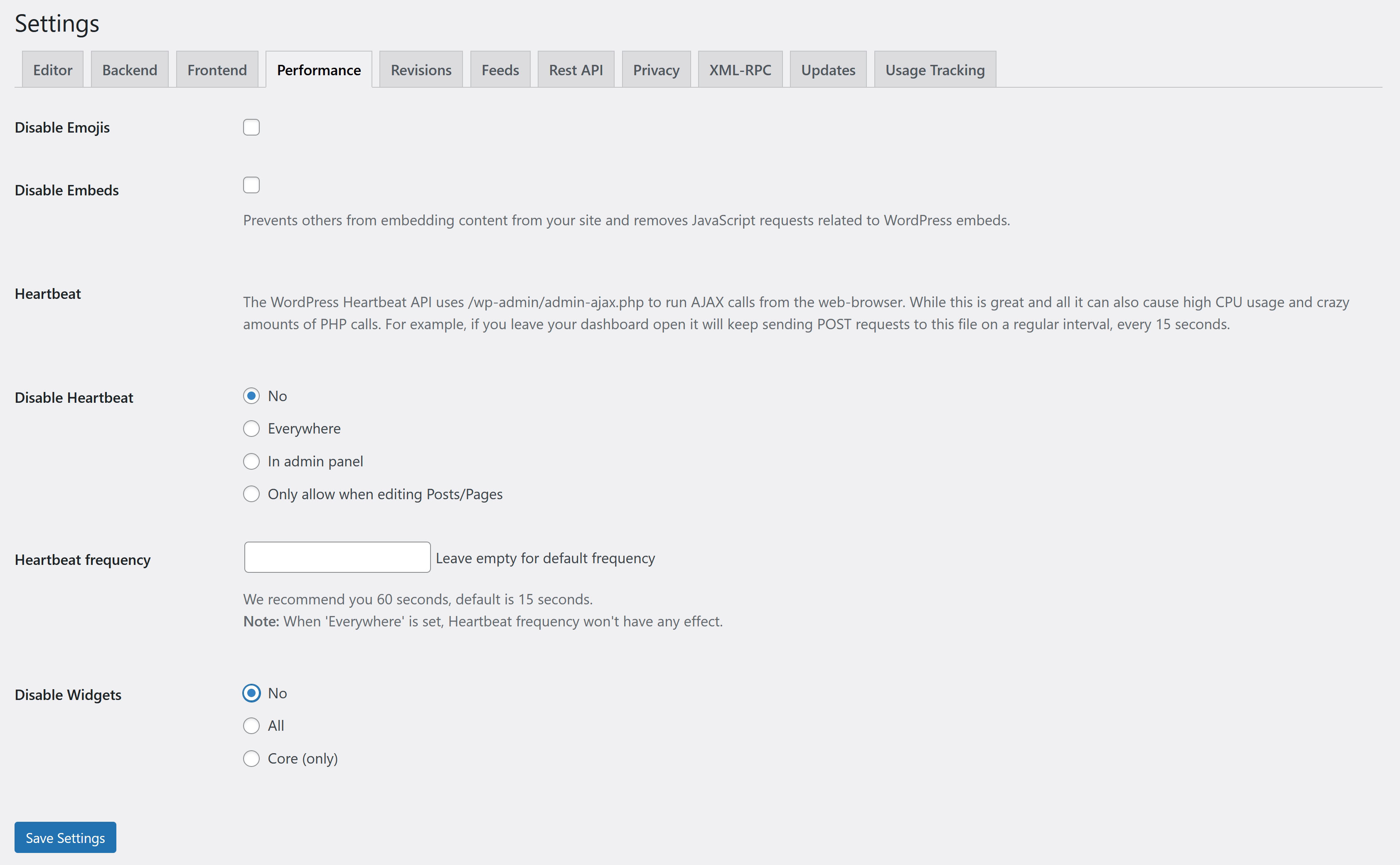
Performance settings
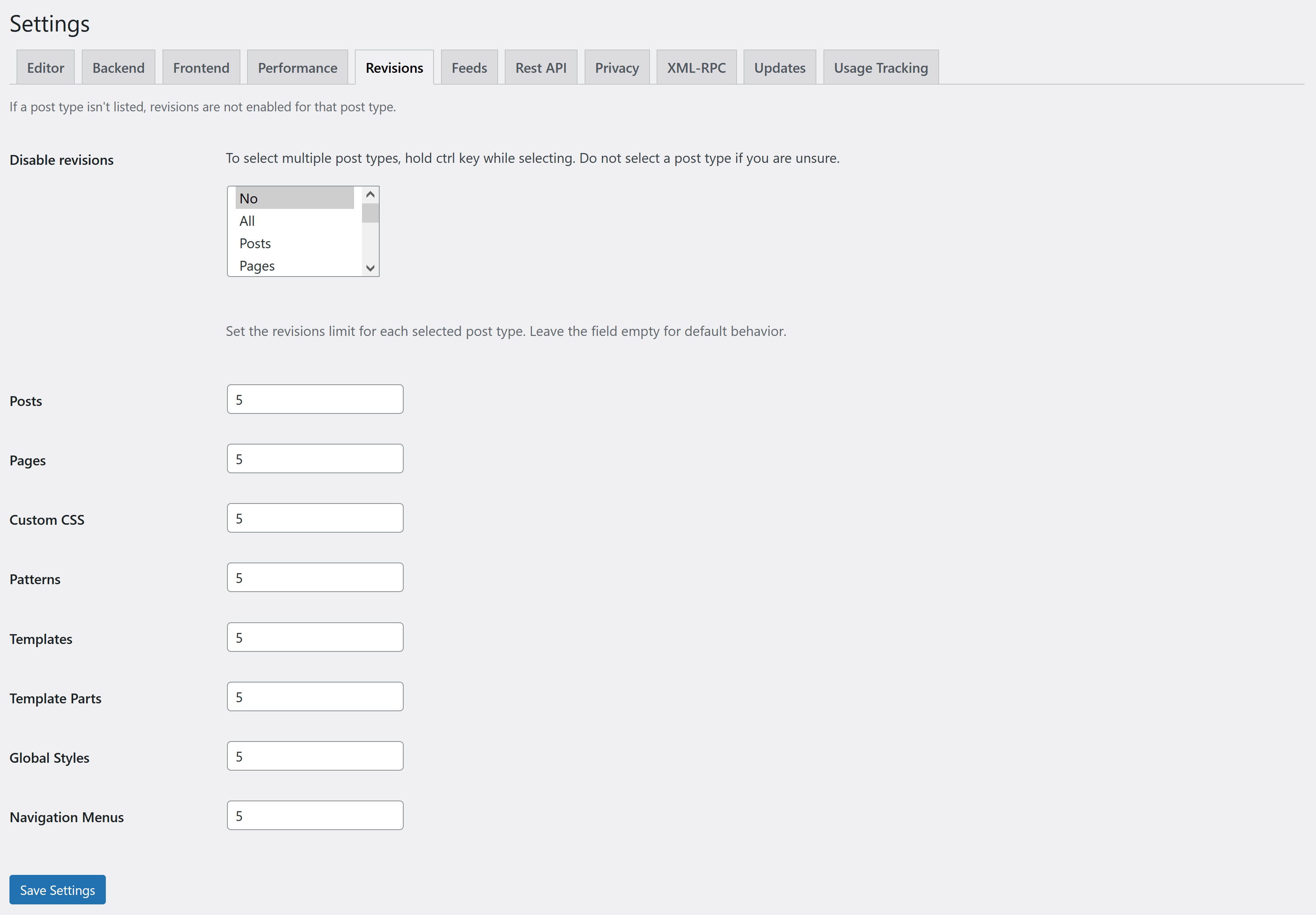
Revisions settings
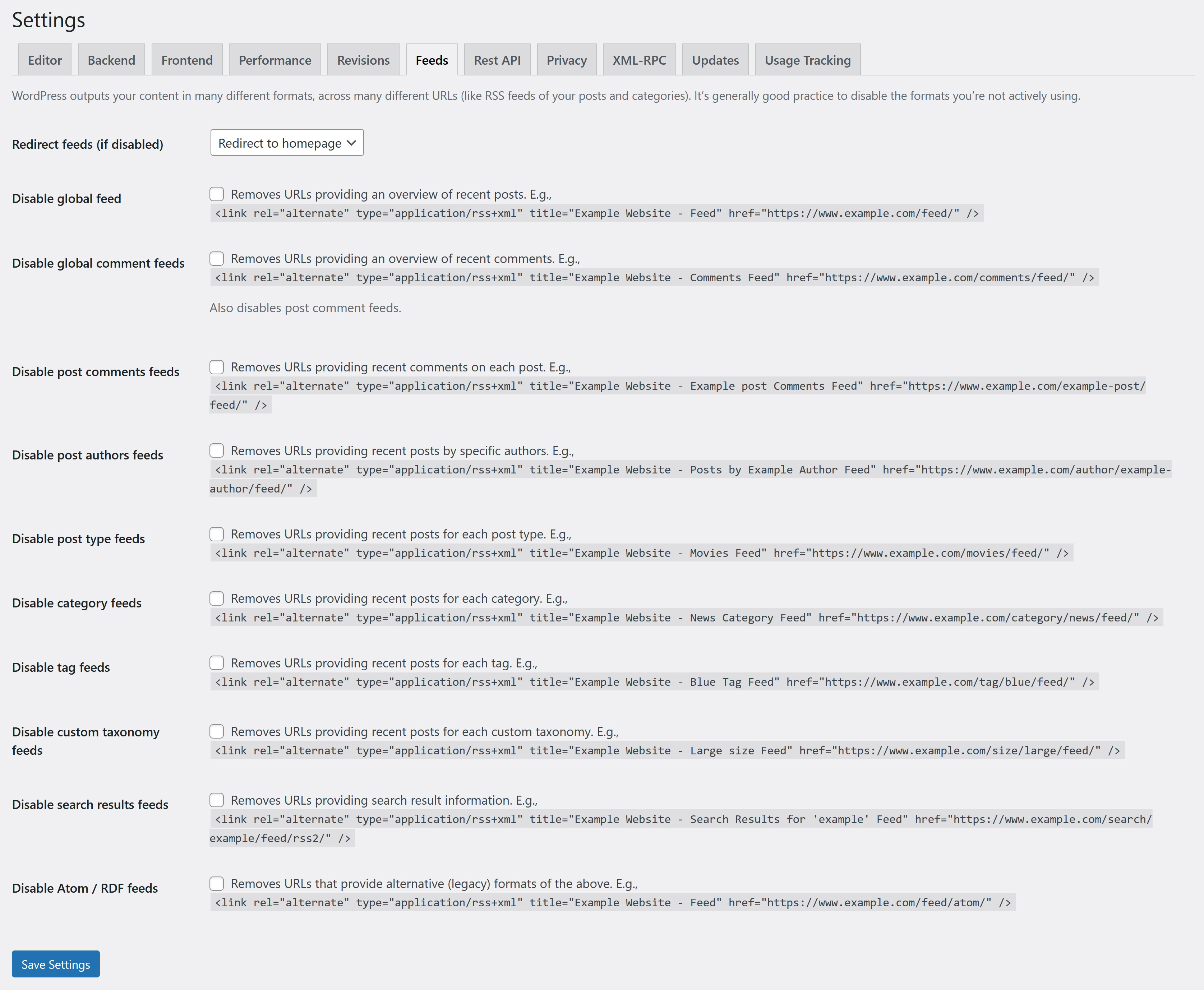
Feeds settings

Rest API settings

Privacy settings
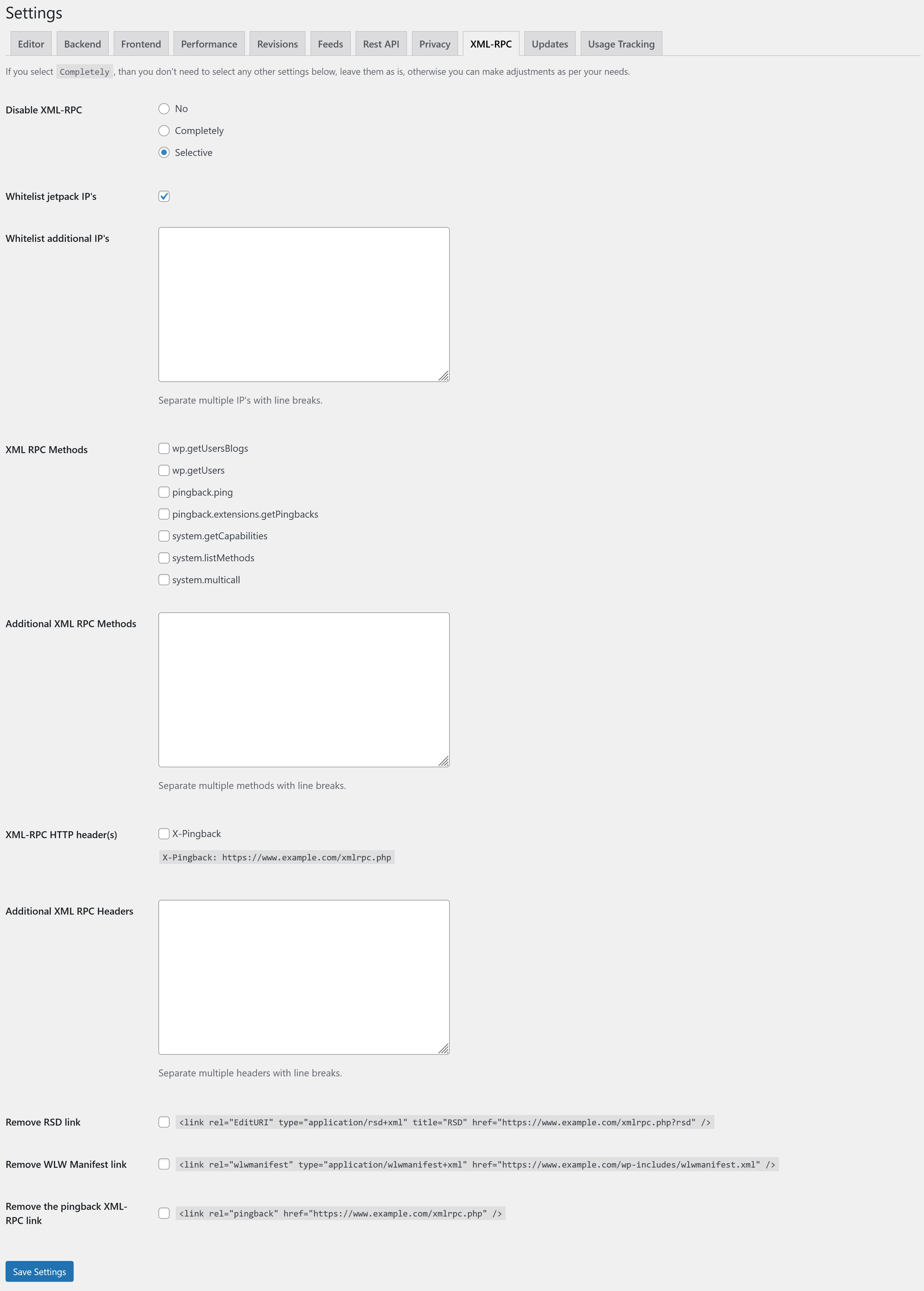
XML-RPC settings
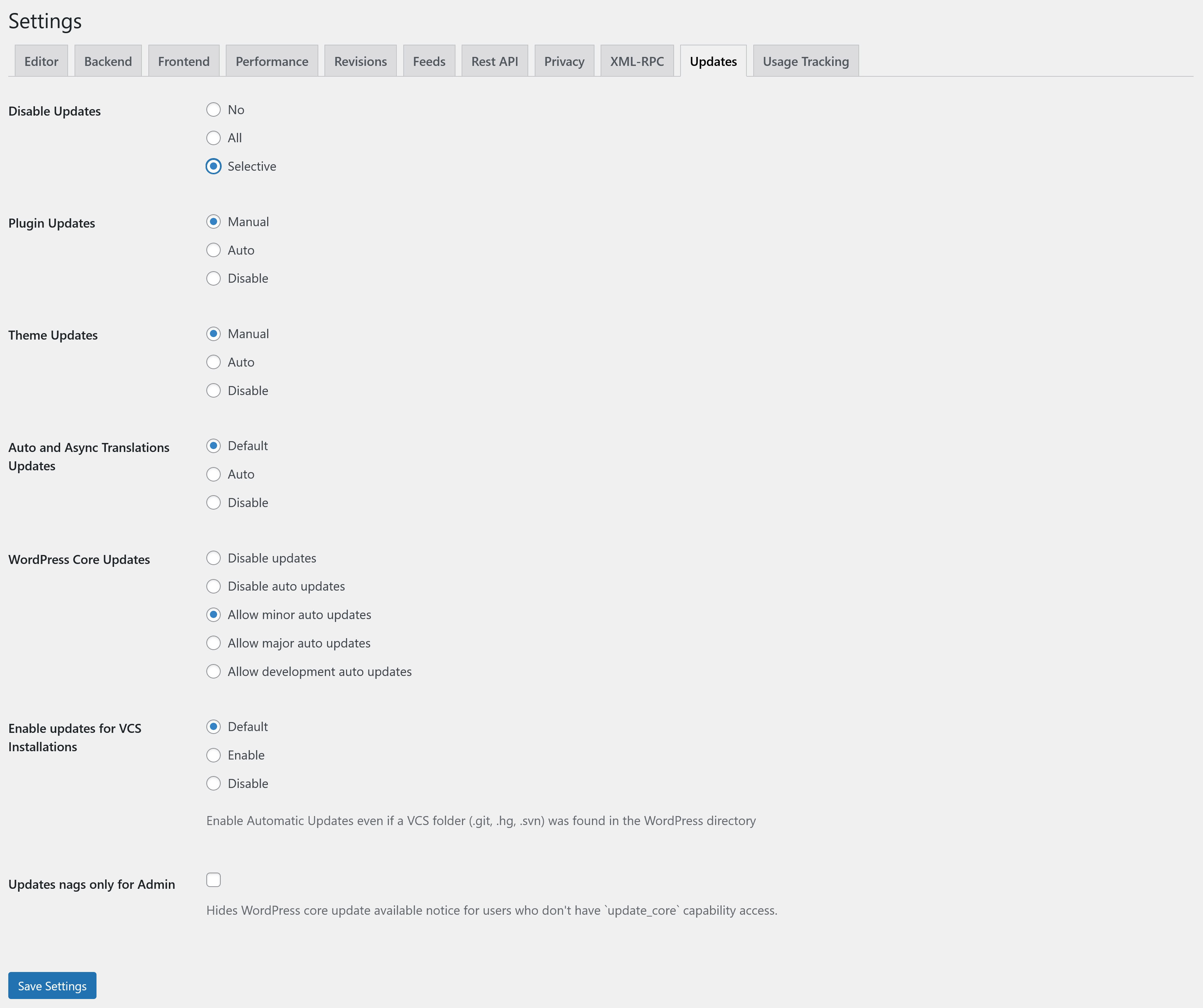
Updates settings

Usage Tracking setting




